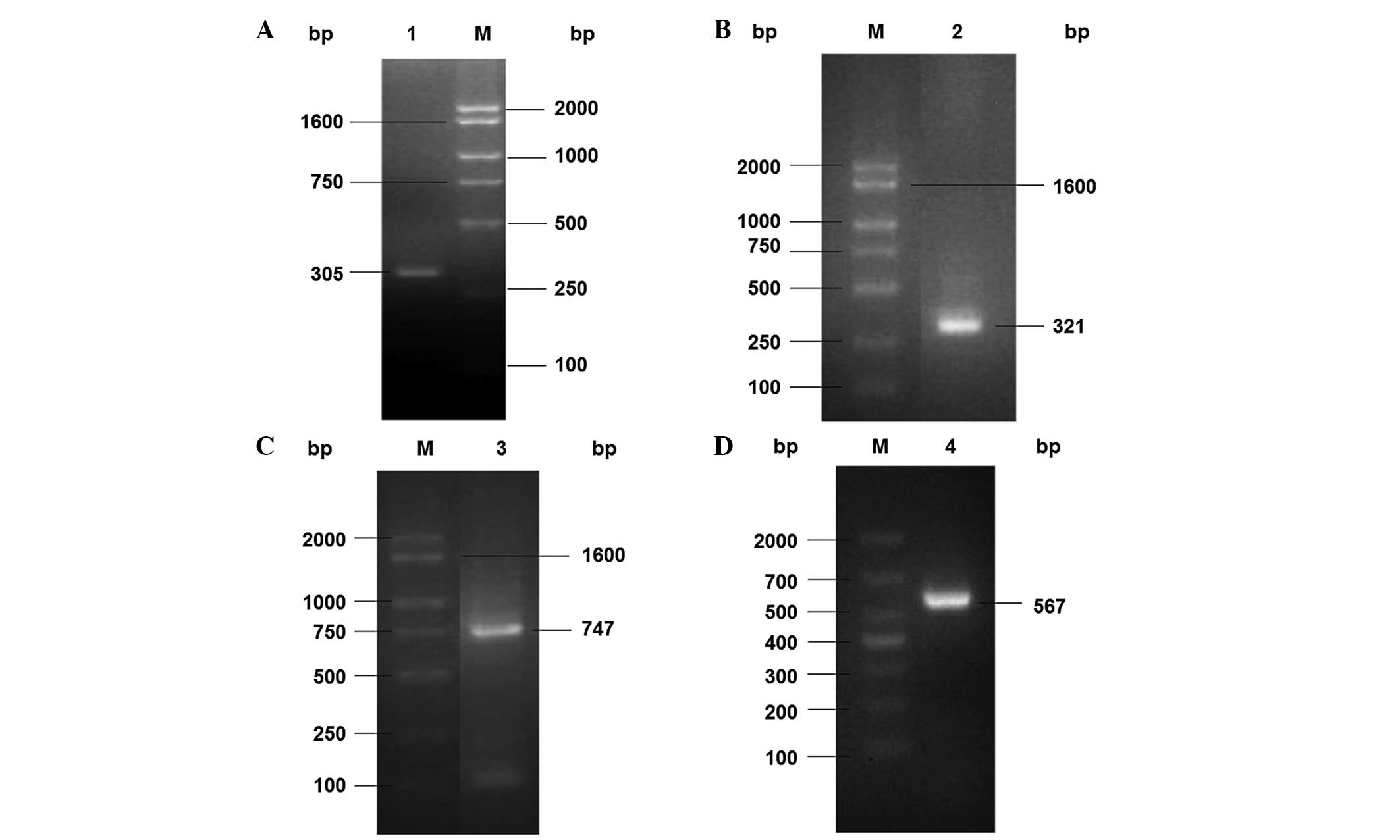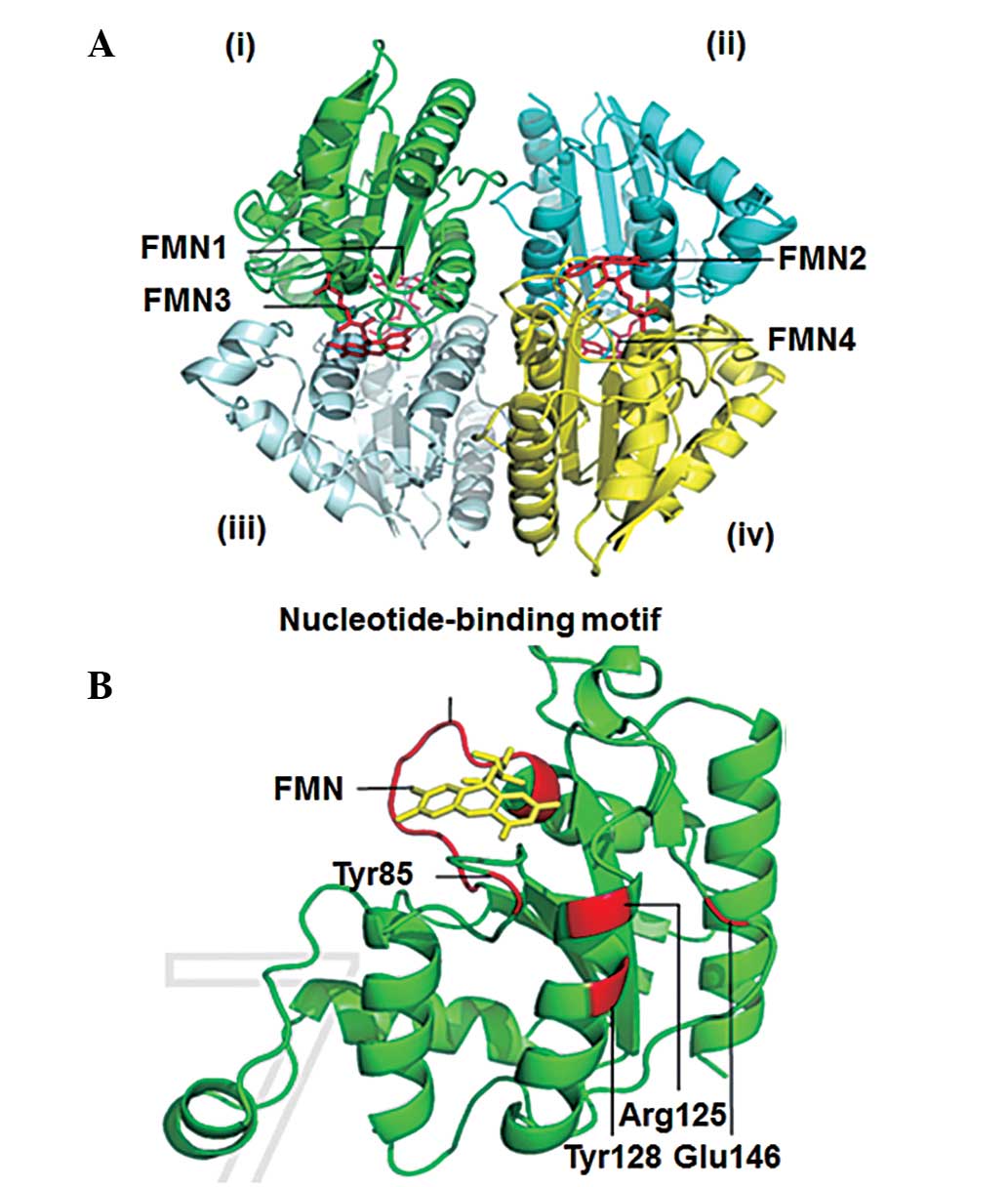|
1
|
Ren BQ, Wang YL, Zhao LY and Jin Y:
Actuality and trend of chromium containing wastewater treatment
technology. Heilongjiang Kexue. 4:67–69. 2013.(In Chinese).
|
|
2
|
Robins KJ, Hooks DO, Rehm BH and Ackerley
DF: Escherichia coli NemA is an efficient chromate reductase that
can be biologically immobilized to provide a cell free system for
remediation of hexavalent chromium. PLoS One. 8:e592002013.
View Article : Google Scholar : PubMed/NCBI
|
|
3
|
Tahri Joutey N, Bahafid W, Sayel H, Ananou
S and El Ghachtouli N: Hexavalent chromium removal by a novel
Serratia proteamaculans isolated from the bank of Sebou River
(Morocco). Environ Sci Pollut Res Int. 21:3060–3072. 2014.
View Article : Google Scholar
|
|
4
|
Christl I, Imseng M, Tatti E, Frommer J,
Viti C, Giovannetti L and Kretzschmar R: Aerobic reduction of
chromium (VI) by Pseudomonas corrugata 28: Influence of metabolism
and fate of reduced chromium. Geomicrobiol J. 29:173–185. 2012.
View Article : Google Scholar
|
|
5
|
Zhitkovich A: Chromium in drinking water:
sources, metabolism, and cancer risks. Chem Res Toxicol.
24:1617–1629. 2011. View Article : Google Scholar : PubMed/NCBI
|
|
6
|
Ramírez-Díaz MI, Díaz-Pérez C, Vargas E,
Riveros-Rosas H, Campos-García J and Cervantes C: Mechanisms of
bacterial resistance to chromium compounds. Biometals. 21:321–332.
2008. View Article : Google Scholar
|
|
7
|
Sandana Mala JG, Sujatha D and Rose C:
Inducible chromate reductase exhibiting extracellular activity in
Bacillus methylotrophicus for chromium bioremediation. Microbiol
Res. pii: S0944-5013(14)00067-6. 2014.PubMed/NCBI
|
|
8
|
Arévalo-Rangel DL, Cárdenas-González JF,
Martínez-Juárez VM and Acosta-Rodríguez I: Hexavalent chromate
reductase activity in cell free extracts of Penicillium sp.
Bioinorg Chem Appl. 2013:9094122013. View Article : Google Scholar : PubMed/NCBI
|
|
9
|
Belchik SM, Kennedy DW, Dohnalkova AC, et
al: Extracellular reduction of hexavalent chromium by cytochromes
MtrC and OmcA of Shewanella oneidensis MR-1. Appl Environ
Microbiol. 77:4035–4041. 2011. View Article : Google Scholar : PubMed/NCBI
|
|
10
|
Park CH, Keyhan M, Wielinga B, Fendorf S
and Matin A: Purification to homogeneity and characterization of a
novel Pseudomonas putida chromate reductase. Appl Environ
Microbiol. 66:1788–1795. 2000. View Article : Google Scholar : PubMed/NCBI
|
|
11
|
Ackerley DF, Gonzalez CF, Park CH, Blake R
2nd, Keyhan M and Matin A: Chromate-reducing properties of soluble
flavoproteins from Pseudomonas putida and Escherichia coli. Appl
Environ Microbiol. 70:873–882. 2004. View Article : Google Scholar : PubMed/NCBI
|
|
12
|
Agarwal R, Bonnano JB, Burley SK and
Swaminathan S: Structure determination of an FMN-reductase from
Pseudomonas aeruginosa PAO1 using sulfur anomalous signal. Acta
Crystallogr D Biol Crystallogr. 62:383–391. 2006. View Article : Google Scholar : PubMed/NCBI
|
|
13
|
Tan XQ, Deng P, Wu Y, et al: In vitro
synthesis and activity identification of chromate reductase T.
Hubei Yixueyuan Xuebao. 7:973–977. 2014.(In Chinese).
|
|
14
|
Sun YB, Mo DJ and Dai TL: Modifying
methods of preparation of PCR template and recovery of DNA. Acta
Academiae Medicinae Hubei. 18:24–25. 1997.(In Chinese).
|
|
15
|
Liu YG and Chen YL: High-efficiency
thermal asymmetric interlaced PCR for amplification of unknown
flanking sequences. Biotechniques. 43:649–650. 2007. View Article : Google Scholar : PubMed/NCBI
|
|
16
|
Clustal X version 2.0. http://www.ebi.ac.uk/tools/clustalw2uri.
Accessed 27/07/2013
|
|
17
|
Molecular Evolutionary Genetics Analysis
(MEGA) software version 4.0.2. http://www.megasoftware.net/uri.
Accessed 30/09/2013
|
|
18
|
Wang J, Zhang H, Wu M and Tang C: Cloning
and sequence analysis of a novel xylanase gene, Auxyn10A, from
Aspergillus usamii. Biotechnol Lett. 33:1029–1038. 2011. View Article : Google Scholar : PubMed/NCBI
|
|
19
|
Araya-Garay JM, Feijoo-Siota L,
Veiga-Crespo P and Villa TG: cDNA cloning of a novel gene codifying
for the enzyme lycopene β-cyclase from Ficus carica and its
expression in Escherichia coli. Appl Microbiol Biotechnol.
92:769–777. 2011. View Article : Google Scholar : PubMed/NCBI
|
|
20
|
Pang X, Zhou DS and Yang RF: Summary of
bacteria mRNA extraction. Shengwu Jishu Tongbao. 1:30–34. 2003.(In
Chinese).
|
|
21
|
Tan HQ and Singh J: High-efficiency
thermal asymmetric interlaced (HE-TAIL) PCR for amplification of Ds
transposon insertion sites in Barley. J Plant Mol Biol Biotechnol.
2:9–14. 2011.
|
|
22
|
Jin H, Zhang Y, Buchko GW, et al:
Structure determination and functional analysis of a chromate
reductase from Gluconacetobacter hansenii. PLoS One. 7:e424322012.
View Article : Google Scholar : PubMed/NCBI
|
|
23
|
Eswaramoorthy S, Poulain S, Hienerwadel R,
et al: Crystal structure of ChrR - a quinone reductase with the
capacity to reduce chromate. PLoS One. 7:e360172012. View Article : Google Scholar
|













